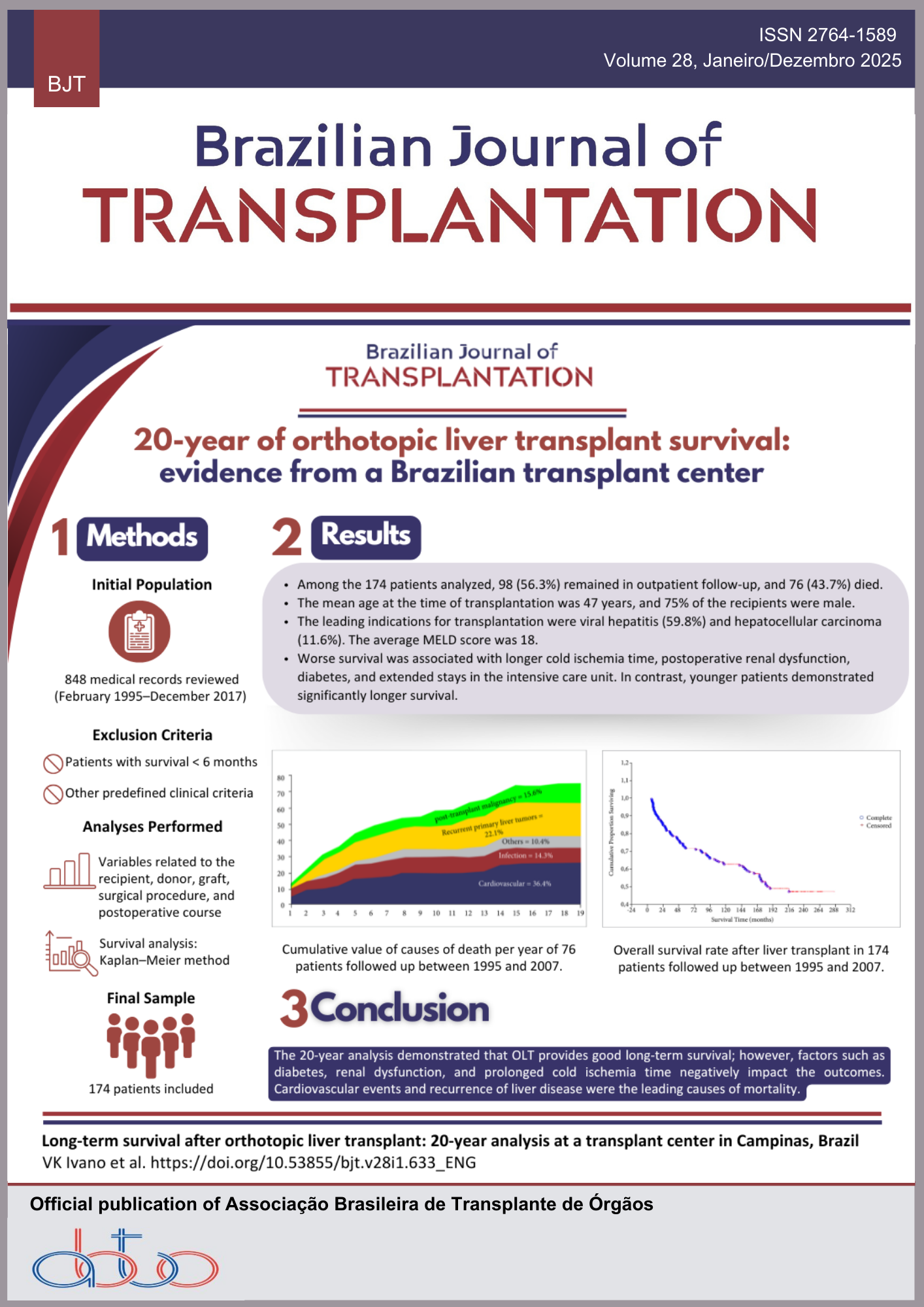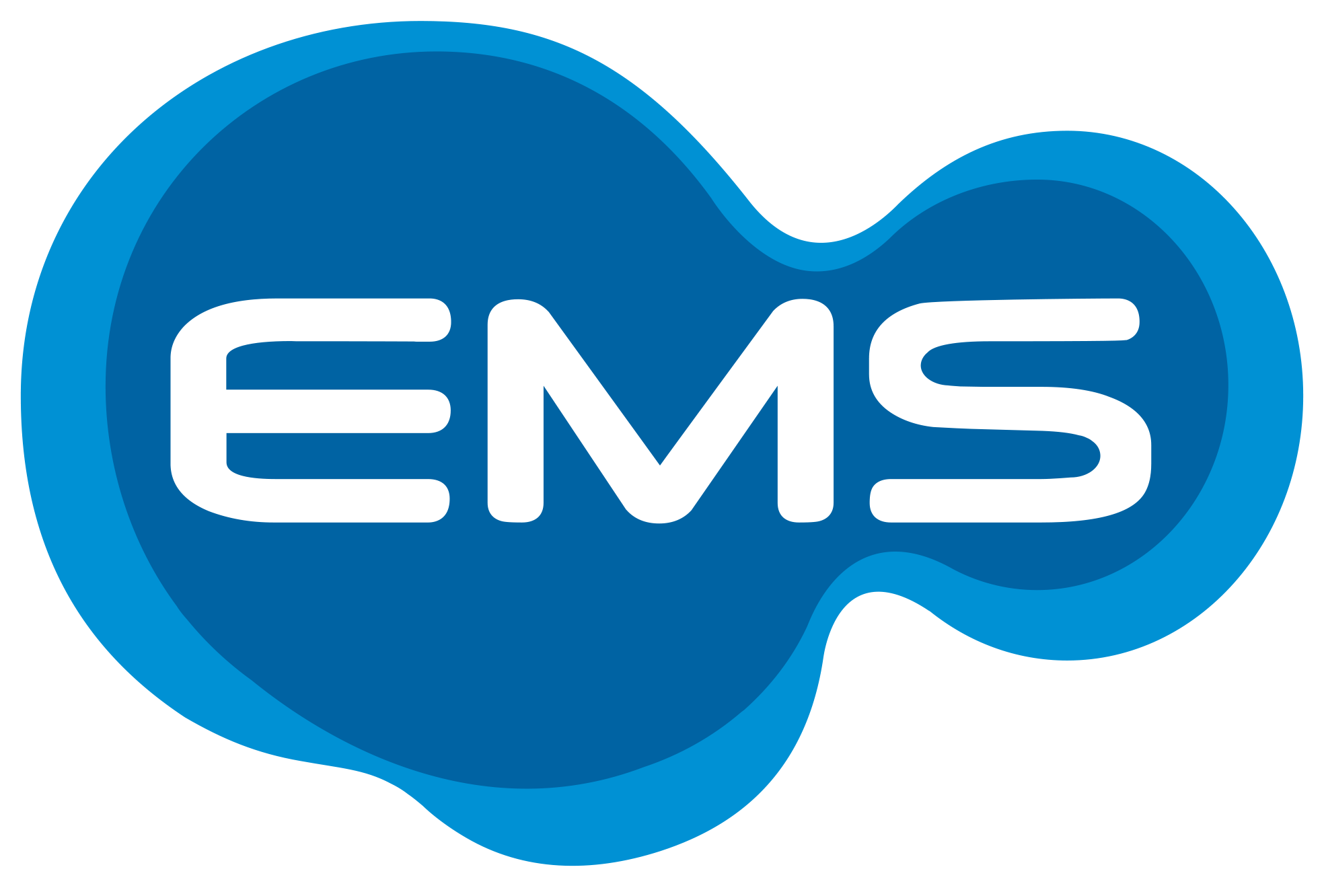Evaluation of the Cost of Liver Transplantation in a Hospital Providing Care under the Brazilian Unified Health System
Keywords:
Liver transplantation, Hospital costs, Costs and Cost AnalysisAbstract
Introduction: Liver transplantation is considered an expensive procedure due to its complexity and the fact that it is predominantly performed on critically ill patients. In general, the management of hospital costs and the allocation of resources for public health have garnered increasing attention over the years. Objectives: This study aims to analyze the costs associated with liver transplantation to facilitate interventions that improve the cost-effectiveness of the procedure. Methods: This is a cross-sectional study conducted in a large philanthropic hospital. Patients aged 18 years or over who underwent liver transplantation in the service were included, yielding a sample of 86 patients. Direct and indirect costs related to care were analyzed, and potential factors associated with increased procedure costs were studied. Results: The sample comprised 76% male, with a median age of 56 years. The one-year survival rate was 71%, and the median length of hospitalization for transplantation was 15 days. The total cost calculated for this sample was BRL 13,049,707.72, with the largest portion (58%) attributable to the daily rates of the intensive care unit and inpatient ward. The total revenue was BRL 11,189,072.36. Even with a 60% incentive increase in the payment schedule, the operational contribution margin remained negative in all scenarios. Factors statistically associated with total costs were the average hospital stay (p 0.0001) and outcome (alive or deceased) (p 0.001). The results reveal a lack of financial sustainability in the context of liver transplantation funded by the Brazilian Unified Health System (SUS). Nationally, the findings of this study have the potential to inform the creation of sustainable programs that promote patient access to effective treatment. Furthermore, these results may serve as a reference for financial analysis methodology in other transplant centers, contributing to a more efficient and equitable approach to healthcare resource management. Conclusion: The cost of hospital care for liver transplantation, over one-year post-transplant, exceeds the payment made by the SUS, even at the highest incentive level, as of September 2023.
Downloads
References
1. Associação Brasileira de Transplantes de Órgãos. Dimensionamento dos Transplantes no Brasil e em cada estado (2015-2022). Registro Brasileiro de Transplantes. 2022 [access on 10 Jan 2022] XXIX(4). Available at https://site.abto.org.br/wpcontent/uploads/2023/03/rbt2022-naoassociado.pdf
2. Soares LSS, Brito ES, Magedanz L, et al. Transplantes de órgãos sólidos no Brasil: estudo descritivo sobre desigualdades na distribuição e acesso no território brasileiro, 2001-2017. Epidemiol Serv Saude, 2020; 29: 1-15. https://doi.org/10.5123/S1679-49742020000100014
3. Souza AB, Rodriguez S, Motta FL, et al. The cost of adult liver transplantation in a referral center in Southern Brazil. Arq Gastroenterol, 2019; 56: 165-71. https://doi.org/10.1590/S0004-2803.201900000-33
4. Portela MP, Neri EDR, Fonteles MMF, et al. O custo do transplante hepático em um hospital universitário do Brasil. Rev Assoc Med Bras, 2010; 56: 322-6. https://doi.org/10.1590/S0104-42302010000300018
5. Brasil. Ministério da Saúde. Programa Nacional de Gestão de Custos. Manual Técnico de Custos – Conceitos e metodologia. Brasília (DF): MS; 2006. [access on 25 Oct 2023]. Available at https://bvsms.saude.gov.br/bvs/publicacoes/06_0243_M.pdf
6. Brasil. Ministério da Saúde. Portaria nº 845, de 2 de maio de 2012. Brasília (DF): MS; 2012. [access on 20 Ago 2022] Available at https://bvsms.saude.gov.br/bvs/saudelegis/gm/2012/prt0845_02_05_2012.html
7. Akarsu M, Matur M, Karademir S, et al. Cost Analysis of Liver Transplantation in Turkey Transplant Proc, 2011; 26: 3783-8. https://doi.org/10.1016/j.transproceed.2011.09.018
8. Boerr E, Anders M, Mella J, et al. Cost analysis of liver transplantation in a community hospital: association with the model for end-stage liver disease, a prognostic index to prioritize the most severe patients. Nutr Clin Pract, 2012; 36(1): 1-6. https://doi.org/10.1016/j.gastrohep.2012.08.003
9. Alter MJ. Epidemiology of hepatitis C. Hepatology, 1997; 26(S3): 62-5. https://doi.org/10.1002/hep.510260711
10. Ribeiro HS, Coury NC, Generoso SV, et al. Energy balance and nutrition status: a prospective assessment of patients undergoing liver transplantation. Nutr Clin Pract, 2020; 35(1): 126-32. https://doi.org/10.1002/ncp.10323
11. Lima MAB, Peter MGA, Machado MVV, et al. O custeio alvo em serviços hospitalares públicos: estudo no serviço de transplante hepático do Hospital Universitário Walter Cantídio da Universidade Federal do Ceará (HUWC/UFC). Anais do Congresso Brasileiros de Custos. 2010 [access on 15 Jan 2023]. Available at https://anaiscbc.emnuvens.com.br/anais/article/view/875
12. Coelho JCU, Wiederkehr JC, Lacerda MA, et al. Custo do transplante hepático no Hospital de Clínicas da Universidade Federal do Paraná. Rev Assoc Med Bras, 1997; 43: 53-7. https://doi.org/10.1590/S0104-42301997000100012
13. Axelrod DA, Koffron AJ, Baker T, et al. The economic impact of MELD on liver transplant centers. Am. J. Transplant., 2005; 5(9): 2297-301. https://doi.org/10.1111/j.1600-6143.2005.01025.x
14. Buchanan P, Dzebisashvili N, Lentine KL, et al. Liver transplantation cost in the model for end‐stage liver disease era: looking beyond the transplant admission. Liver Transpl, 2009; 15(10): 1270-7. https://doi.org/10.1002/lt.21802
15. Brasil. Ministério da Saúde. Portaria nº 766, de 14 de setembro de 2023. Brasília (DF): MS; 2023. [access on 25 Out 2023] Available at https://www.in.gov.br/en/web/dou/-/portaria-n-766-de-14-de-setembro-de-2023-510392848
Downloads
Published
How to Cite
Issue
Section
License
Copyright (c) 2025 Mara Rúbia de Moura, Bárbara Buitrago Pereira, Agnaldo Soares Lima

This work is licensed under a Creative Commons Attribution 4.0 International License.









